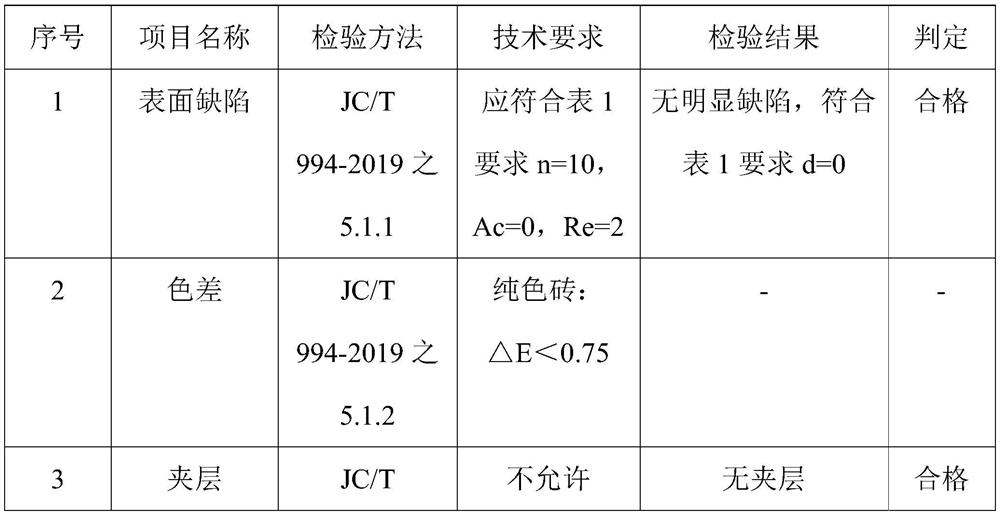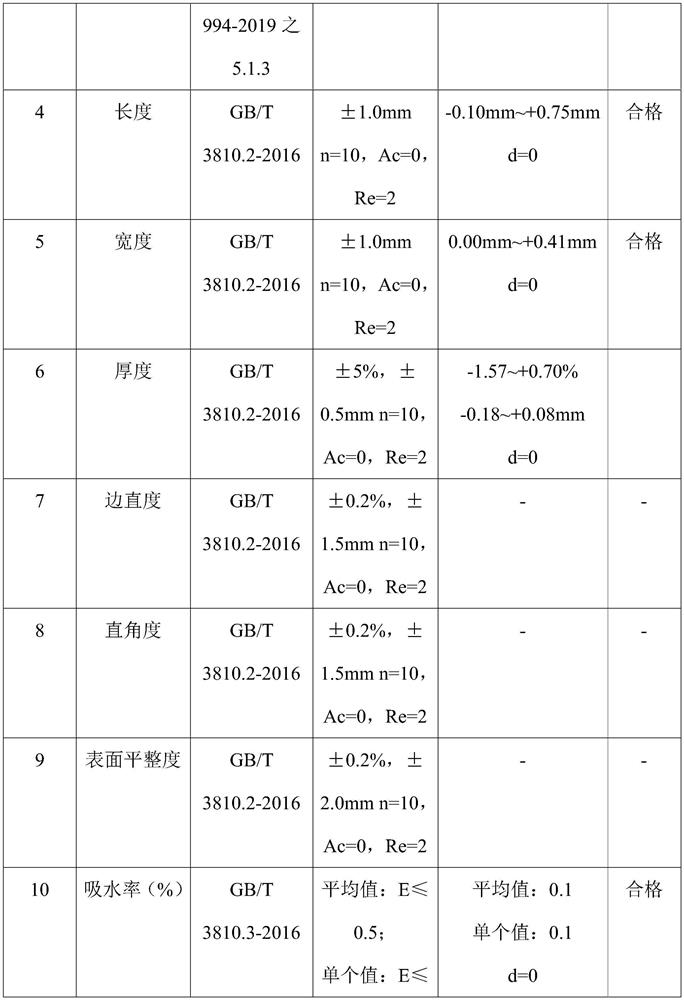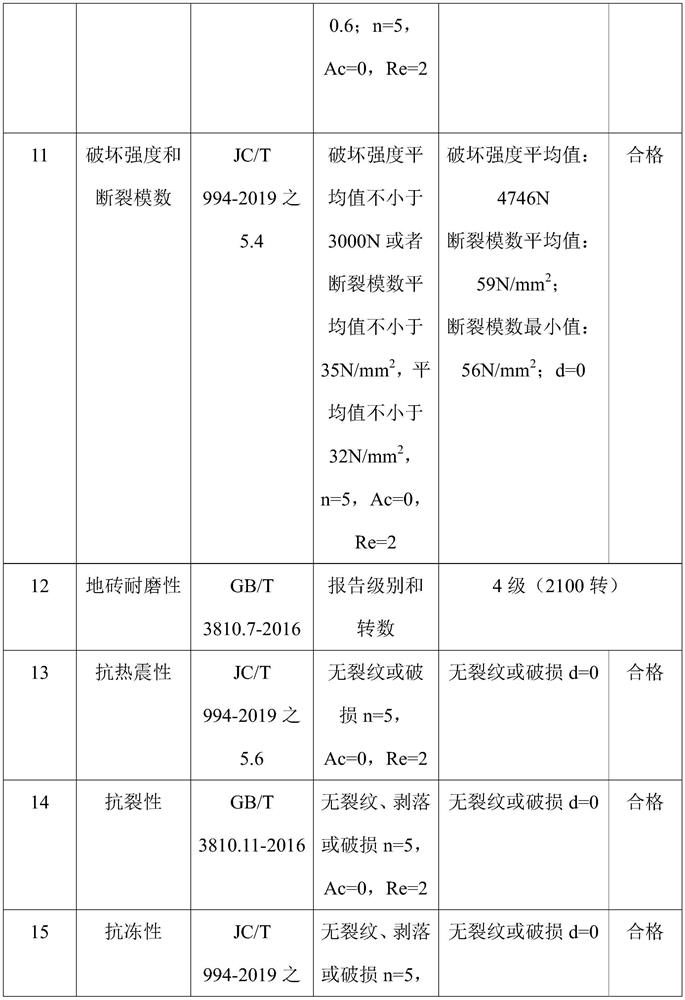Wear-resistant microcrystal dry particles with soft light effect, preparation method thereof and ceramic tile
A microcrystalline and soft light technology, applied in the field of ceramic tiles, can solve the problems of poor texture and poor wear resistance, and achieve the effect of improving wear resistance, improving gloss, and broadening the scope of application.
- Summary
- Abstract
- Description
- Claims
- Application Information
AI Technical Summary
Problems solved by technology
Method used
Image
Examples
Embodiment 1
[0024] A preparation method of wear-resistant microcrystalline dry particles with soft light effect, comprising the following steps:
[0025] Quartz powder, alumina, calcite, zinc oxide, barium carbonate, sodium carbonate and boric acid are mixed evenly through a mixer, and then added to a high-temperature melting furnace for melting. The melting temperature is 1500-1550 °C. The melted molten glass is water quenched, dried, crushed and sieved to make microcrystalline dry particles of 60-120 mesh. Wherein, the chemical composition weight percent of microcrystalline dry particle is: SiO 2 55%, A1 2 o 3 9%, CaO 18%, ZnO 4%, BaO 5%, Na 2 O 6%, B 2 o 3 3%.
Embodiment 2
[0027] A preparation method of wear-resistant microcrystalline dry particles with soft light effect, comprising the following steps:
[0028] Quartz powder, alumina, calcite, zinc oxide, barium carbonate, sodium carbonate and boric acid are mixed evenly through a mixer, and then added to a high-temperature melting furnace for melting. The melting temperature is 1500-1550 °C. The melted molten glass is water quenched, dried, crushed and sieved to make microcrystalline dry particles of 60-120 mesh. Wherein, the chemical composition weight percent of microcrystalline dry particle is: SiO 2 65%, A1 2 o 3 5%, CaO 17%, ZnO 4.5%, BaO 3%, Na 2 O 3%, B 2 o 3 2.5%.
Embodiment 3
[0030] A preparation method of wear-resistant microcrystalline dry particles with soft light effect, comprising the following steps:
[0031] Quartz powder, alumina, calcite, zinc oxide, barium carbonate, sodium carbonate and boric acid are mixed evenly through a mixer, and then added to a high-temperature melting furnace for melting. The melting temperature is 1500-1550 °C. The melted molten glass is water quenched, dried, crushed and sieved to make microcrystalline dry particles of 60-120 mesh. Wherein, the chemical composition weight percent of microcrystalline dry particle is: SiO 2 62.2%, A1 2 o 3 8%, CaO 14%, ZnO 3.8%, BaO 5%, Na 2 O 6%, B 2 o 3 1%.
PUM
| Property | Measurement | Unit |
|---|---|---|
| particle size (mesh) | aaaaa | aaaaa |
| Mohs hardness | aaaaa | aaaaa |
Abstract
Description
Claims
Application Information
 Login to View More
Login to View More - R&D
- Intellectual Property
- Life Sciences
- Materials
- Tech Scout
- Unparalleled Data Quality
- Higher Quality Content
- 60% Fewer Hallucinations
Browse by: Latest US Patents, China's latest patents, Technical Efficacy Thesaurus, Application Domain, Technology Topic, Popular Technical Reports.
© 2025 PatSnap. All rights reserved.Legal|Privacy policy|Modern Slavery Act Transparency Statement|Sitemap|About US| Contact US: help@patsnap.com



